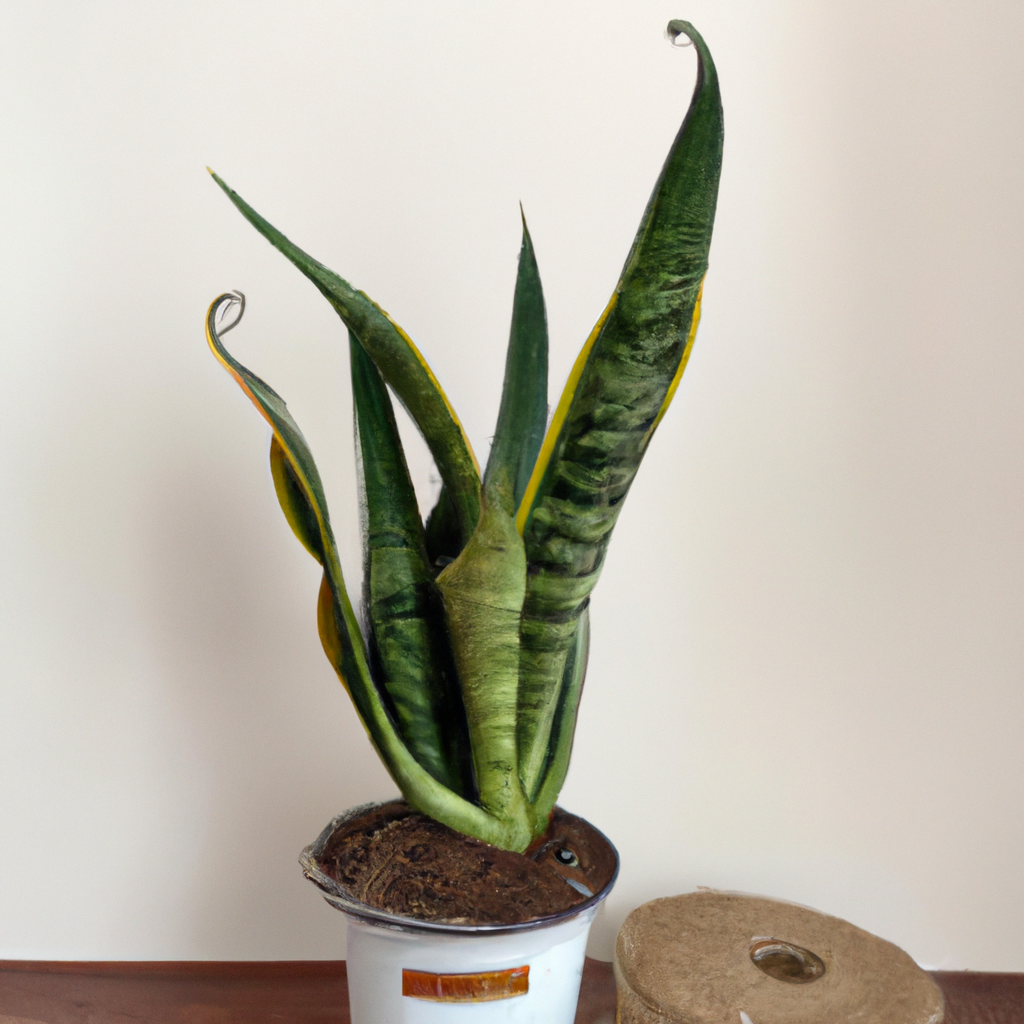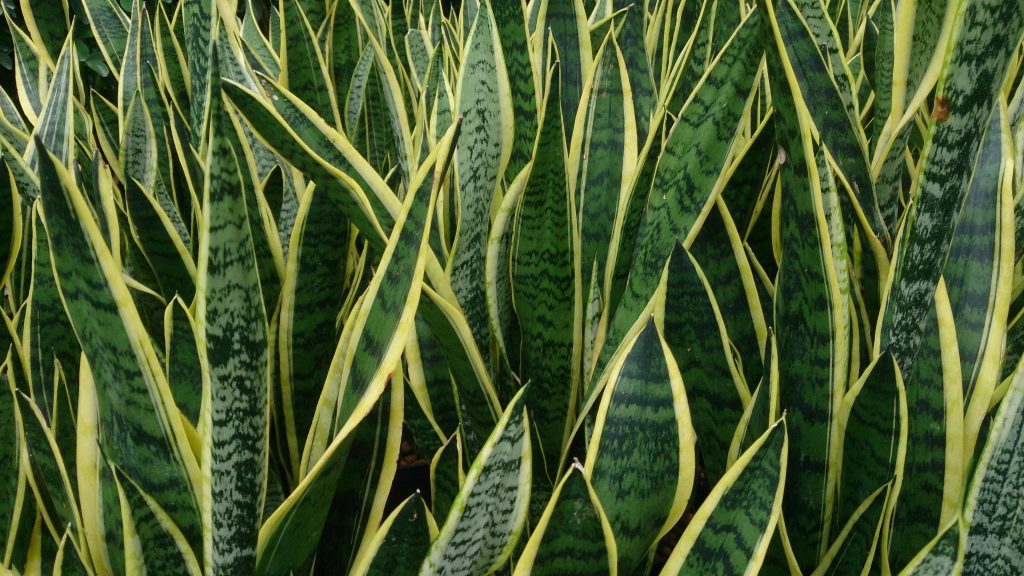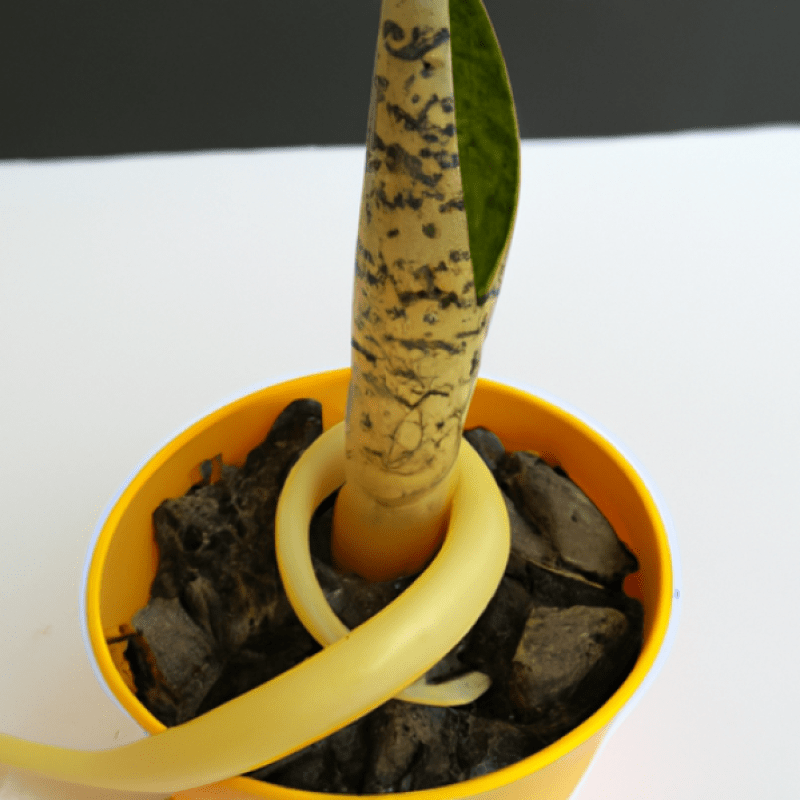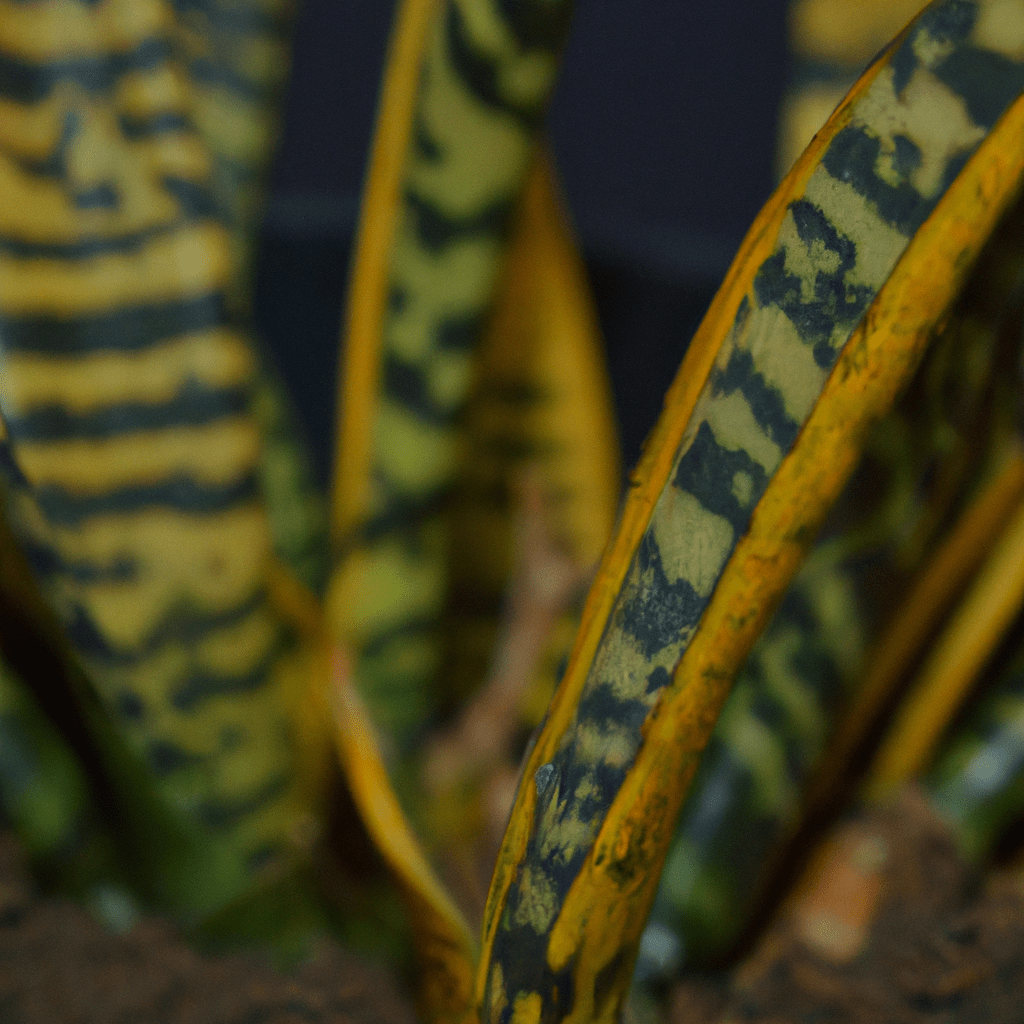Are you the proud owner of a Sansevieria Fischeri plant? Congrats! You’ve got yourself a beautiful and resilient plant that’s sure to add some greenery to your space. But, do you know how to care for it? Don’t worry, we’ve got you covered. In this article, we’ll be answering 20 questions about how to care for Sansevieria Fischeri. From watering to soil to pests, we’ll give you all the answers you need to keep your plant thriving. So, grab a cup of coffee (or tea, we don’t judge), sit back, and let’s get started!
1. What is Sansevieria Fischeri?
Sansevieria Fischeri is a species of succulent plant that belongs to the Asparagaceae family. It is commonly known as the “Cylindrical Snake Plant” due to its cylindrical leaves that grow up to 60 cm long and 1 cm in diameter. The leaves are dark green in color with light green horizontal stripes and pointed tips. The plant has a slow growth rate and can reach up to 90 cm in height. It is a hardy plant that can tolerate a wide range of temperatures and lighting conditions. Sansevieria Fischeri is native to East Africa and is commonly used as an ornamental plant in gardens, offices, and homes. It is also considered to have air-purifying properties and can remove toxins such as formaldehyde and benzene from the air. The plant requires minimal care and is an ideal choice for beginners or those with limited gardening experience.
2. How much light does Sansevieria Fischeri need?
Sansevieria Fischeri is a species of succulent plant that prefers bright indirect light, but can also tolerate low light conditions. However, it is important to note that too much direct sunlight can cause leaf burn and damage to the plant. The ideal amount of light for Sansevieria Fischeri is about 4-6 hours of indirect sunlight per day. This can be achieved by placing the plant near a window that receives bright but filtered light, or by using a sheer curtain to diffuse the light. In low light conditions, Sansevieria Fischeri may grow more slowly and require less watering, but may also become leggy and lose its compact shape. Therefore, providing the right amount of light is crucial for the health and growth of this plant.
3. What is the ideal temperature for Sansevieria Fischeri?
Sansevieria Fischeri thrives in warm temperatures. The ideal temperature for this plant ranges from 18°C to 27°C. It is essential to maintain a consistent temperature throughout the year to ensure proper growth and development of the plant. Extreme temperature fluctuations can cause damage to the plant, resulting in stunted growth and decreased vitality. As a tropical plant, Sansevieria Fischeri requires high levels of humidity to thrive. It is essential to maintain a humid environment, especially during the warmer months. Dry air can cause the leaves to become brittle and prone to damage. It is also essential to protect the plant from direct sunlight, as this can cause scorched leaves. Overall, providing a warm and humid environment, protected from direct sunlight, is crucial for the ideal growth of Sansevieria Fischeri.
4. How often should I water Sansevieria Fischeri?
Sansevieria Fischeri is a succulent plant that can survive in low-water conditions. It’s important to ensure that the soil is completely dry before watering it again. Overwatering can cause root rot, which will damage the plant’s health.
The frequency of watering a Sansevieria Fischeri depends on various factors such as the humidity levels, temperature, and the soil type. Generally, watering once a month is sufficient during the winter months when the plant is in its dormant phase. During the growing season, which is spring and summer, the Sansevieria Fischeri may need to be watered once every two weeks.
The best indicator of when to water the plant is to check the soil moisture levels. Make sure the soil is completely dry before watering the plant again. It’s vital to use a well-draining potting mix to prevent water from accumulating in the soil. In conclusion, Sansevieria Fischeri requires infrequent watering, and overwatering should be avoided to ensure its healthy growth.
5. What type of soil is best for Sansevieria Fischeri?
Sansevieria Fischeri thrives in well-draining soil with a pH range of 5.5 to 7.5. The ideal soil mix should be composed of a blend of sand, perlite, and peat moss. It is vital to avoid soil that is too heavy or compact as it can lead to root rot, which is a common problem with Sansevieria. The soil should be loose enough to allow water to drain quickly, and the plant’s roots should not be sitting in water for prolonged periods. Additionally, Sansevieria Fischeri prefers soil that is rich in nutrients, so it’s recommended to add some organic matter, such as compost, to the soil mix. When potting Sansevieria Fischeri, it’s essential to use a container with drainage holes to prevent water from accumulating in the bottom. Overall, a well-draining, well-aerated, and nutrient-rich soil mix is the best option for Sansevieria Fischeri.
6. Can Sansevieria Fischeri grow in low humidity environments?
Sansevieria Fischeri is a plant species that belongs to the Asparagaceae family. It is native to Tanzania and Kenya, and thrives in tropical regions with high humidity levels. However, it is possible for this species to grow in low humidity environments, as it is drought-tolerant and can adapt to a wide range of conditions. In fact, Sansevieria Fischeri can survive in areas with humidity levels as low as 30%. However, it is important to note that the growth rate and overall health of the plant may be impacted by low humidity levels. To ensure optimal growth, it is recommended to provide the plant with moderate to high humidity levels, as well as well-draining soil and indirect light. Regular watering and occasional fertilization can also help to promote healthy growth and development.
7. What are the common pests that affect Sansevieria Fischeri?
Common Pests Affecting Sansevieria Fischeri
Sansevieria Fischeri, also known as dwarf sansevieria, is a hardy plant that is resistant to most pests and diseases. However, some pests can still infest this plant, causing damage and reducing its overall health.
- Spider mites: These tiny arachnids are common pests that can infest sansevieria plants, including Fischeri. They suck the sap from the leaves, causing them to turn yellow and become brittle.
- Mealybugs: These pests are small, white, and soft-bodied insects that feed on the sap of the plant. They often cluster in protected areas, such as leaf axils and under the leaves.
- Scale insects: These pests are small, round, and brown or black. They attach themselves to the leaves and suck the sap, causing yellowing and distortion of the leaves.
- Thrips: These tiny, slender insects feed on the sap of the plant, causing yellowing and curling of the leaves. They also leave behind black fecal matter.
Regular inspection and treatment with insecticidal soap or neem oil can help control these pests and keep your Sansevieria Fischeri healthy.
8. How big can Sansevieria Fischeri grow?
Sansevieria Fischeri, also known as Fischer’s snake plant or dwarf snake plant, is a slow-growing succulent that can reach a maximum height of 12 inches and a width of 6 inches. Its leaves are cylindrical in shape and can grow up to 4-6 inches long and 0.5-1 inch wide. The plant is native to the tropical regions of Africa and is commonly grown as an indoor plant due to its ability to tolerate low light conditions and neglect. Sansevieria Fischeri is a low-maintenance plant that requires well-drained soil and infrequent watering. It is known for its air-purifying qualities, making it a popular choice for homes and offices. While Sansevieria Fischeri may not grow as large as some other snake plant varieties, it is still a beautiful and unique addition to any plant collection.
9. Is Sansevieria Fischeri a good indoor plant?
Sansevieria Fischeri is a fascinating indoor plant that has gained popularity in recent years due to its unique aesthetic and low maintenance requirements. This plant is a member of the Sansevieria genus, which is known for its ability to thrive in low light conditions and tolerate irregular watering schedules.
If you’re looking for a plant that can add a touch of greenery to your home or office without requiring a lot of attention, Sansevieria Fischeri is a great choice. It has a compact size and can be easily placed on a windowsill or desk without taking up too much space.
One of the benefits of Sansevieria Fischeri is that it is extremely resilient and can survive in a variety of conditions. It can handle both low and high light environments, and can tolerate periods of drought without suffering any ill effects. This makes it an ideal plant for those who travel frequently or have busy schedules.
Overall, Sansevieria Fischeri is an excellent indoor plant that is easy to care for and aesthetically pleasing. Whether you’re a seasoned plant enthusiast or a novice gardener, this plant is sure to thrive in your home or office.
10. How often should I fertilize Sansevieria Fischeri?Sansevieria Fischeri requires a proper fertilization schedule to ensure optimal growth and development. The frequency of fertilization largely depends on the growth rate of the plant and the type of fertilizer used. Fertilization in excess can lead to salt buildup and other nutrient imbalances in the soil, thereby damaging the plant’s health. The best way to determine the fertilization schedule is to assess the plant’s growth rate and soil nutrient levels. Typically, Sansevieria Fischeri requires fertilization once every 2-3 months during the growing season using a balanced, water-soluble fertilizer. However, during the dormant period, fertilization should be limited to once every 4-6 months to prevent over-fertilization. It is crucial to follow the manufacturer’s instructions regarding the amount and frequency of fertilizer application to avoid any unwanted consequences. Furthermore, it is recommended to fertilize Sansevieria Fischeri during the early morning or late evening to avoid leaf burn caused by the harsh sunlight.11. What are the benefits of having Sansevieria Fischeri in my home?
Sansevieria Fischeri is a highly adaptive plant that can thrive in both low and bright light conditions. It is also known for its ability to purify the air by removing toxins such as formaldehyde, benzene, and xylene. This makes it an excellent choice for indoor environments where air quality may be a concern. Additionally, Sansevieria Fischeri is low maintenance and can go weeks without water, making it a great choice for busy individuals or those who may not have a green thumb. Its sword-like leaves also add a unique aesthetic to any space, making it a popular choice for interior design. Overall, the benefits of having Sansevieria Fischeri in your home include improved air quality, low maintenance care, and an attractive addition to your decor.
12. Can Sansevieria Fischeri survive in low light conditions?
Sansevieria Fischeri is a plant that belongs to the Asparagaceae family. It is a succulent plant that can be grown indoors with ease. It is adaptable to different light conditions, but it prefers bright, indirect light. However, it can still survive in low light conditions, but the growth rate will be slower, and the leaves may lose their vibrant green color.
The Sansevieria Fischeri plant does not require much watering and can survive in drought-like conditions. It is a slow-growing plant that can reach up to 20 inches in height. The plant can tolerate temperature extremes and can grow well in a range of temperatures from 60°F to 85°F.
In conclusion, Sansevieria Fischeri can survive in low light conditions, but it may not thrive as well as it would in bright, indirect light. To keep the plant healthy, it is important to provide it with well-draining soil, water it sparingly, and keep it in a temperature range that suits its needs.
13. How do I prune Sansevieria Fischeri?
Pruning Sansevieria Fischeri requires precision and care. Start by assessing the plant and identifying any dead or damaged leaves, which should be removed first. Next, determine the desired shape and size of the plant, and selectively remove leaves to achieve that look. It’s important to use sharp, sterile pruning shears to avoid damaging the plant and to prevent the spread of disease. Cut leaves at an angle, close to the base of the plant, and avoid cutting into the stem. After pruning, remove any debris from around the plant to prevent pests and disease. Sansevieria Fischeri is a hardy plant, but over-pruning can cause stress and damage, so it’s important to only prune as necessary. Regular maintenance, such as removing yellowing leaves and cleaning the plant, will help keep it healthy and looking its best.
14. What is the best way to repot Sansevieria Fischeri?
The ideal method to repot Sansevieria Fischeri involves a few crucial steps. Firstly, choose a pot that is slightly larger than the current one and has drainage holes at the bottom. Sansevieria Fischeri thrives in well-draining soil, so opt for a mix of potting soil and perlite or sand. Remove the plant from its current pot by gently loosening the soil and untangling the roots. Inspect the roots for signs of damage or disease and trim if necessary. Place the plant in the new pot, filling the bottom with the prepared soil mix and ensuring that the crown of the plant sits at the same level as before. Add more soil around the roots, pressing it down gently to secure the plant. Water the soil thoroughly, allowing it to drain out of the bottom holes. The new pot should be placed in a bright, indirect light location, and watering should be done only when the soil is dry to the touch.
15. How long does it take for Sansevieria Fischeri to bloom?
Sansevieria Fischeri is a slow-growing plant that can take several years to reach maturity and bloom. However, the exact time it takes for this species to bloom is highly dependent on various environmental factors such as temperature, light, and humidity. In general, Sansevieria Fischeri blooms during the summer months, but this can vary depending on the conditions it is grown in. The plant requires bright, indirect sunlight and well-draining soil to thrive. It is also crucial to avoid over-watering, as this can cause root rot and prevent blooming. Additionally, fertilizing the plant regularly during its growing season can encourage blooming. Overall, patience and proper care are essential for successfully growing and blooming Sansevieria Fischeri.
16. Can Sansevieria Fischeri grow in water?
Sansevieria Fischeri, commonly known as Fischer’s Snake Plant, is a drought-resistant plant that can thrive in various growing conditions. While this species can grow in water, it is not recommended for long-term growth as it may lead to root rot and eventual death.
Sansevieria Fischeri is best grown in well-draining soil with occasional watering, as it is adapted to survive in arid conditions. Overwatering or placing the plant in standing water can cause the roots to suffocate and rot.
While some Sansevieria species, such as Sansevieria Trifasciata, can grow in water indefinitely, it is not the case for Sansevieria Fischeri. It is important to provide proper drainage and allow the soil to dry out between waterings to ensure the longevity and health of this plant.
17. How do I propagate Sansevieria Fischeri?To propagate Sansevieria Fischeri, one needs to first identify the appropriate method of propagation, which could be through division, leaf cuttings, or offsets. Leaf cuttings are the most common method used to propagate Sansevieria Fischeri, and this involves selecting healthy leaves and cutting them into small pieces, which are then planted and allowed to establish roots. The offsets, on the other hand, are small plantlets that grow from the base of the mother plant, and they can be easily separated and planted to create new plants. Division is another method that involves separating the plant into smaller sections, each with its own roots and leaves. This method is best suited for mature plants that have outgrown their container. Once the appropriate method has been identified, it is important to provide the right growing conditions, including well-drained soil, adequate sunlight, and appropriate watering. With time, the new plants will develop roots and grow into healthy specimens.
18. What are the care tips for Sansevieria Fischeri during winter months?
During the winter months, it is important to provide Sansevieria Fischeri with proper care to ensure its survival. This plant should be kept in a well-lit area with temperatures between 60-85°F. Watering should be limited to once every 2-3 weeks, as this plant is drought tolerant and overwatering can lead to root rot. Fertilizing should also be reduced to once every 2-3 months.
In addition, it is important to keep the Sansevieria Fischeri away from drafts and cold temperatures, as it is sensitive to cold weather. Humidity levels should also be monitored, as low humidity can lead to brown tips on the leaves.
Pruning can be done during the winter months to remove any dead or damaged leaves. Repotting should be avoided during this time, as the plant is in a dormant phase and may not have the energy to recover from the stress of repotting.
By following these care tips, Sansevieria Fischeri can thrive during the winter months and continue to provide its unique beauty to any indoor space.
19. How often should I check for root rot in Sansevieria Fischeri?
A thorough examination for the presence of root rot in Sansevieria Fischeri should be performed frequently, as the condition can occur without warning and can spread rapidly. Factors such as soil type, watering frequency and light levels can all contribute to the development of root rot, making it difficult to predict when it may appear.
To begin with, it is recommended to check once every two weeks to identify any early signs of root rot, such as wilting or yellowing leaves, soft or brown roots, or a foul odor emanating from the soil. If any of these signs are observed, immediate action should be taken to prevent the spread of the disease. This may include reducing watering frequency, improving soil drainage, removing affected leaves or roots and applying a fungicide.
Regular maintenance is crucial in the prevention and management of root rot in Sansevieria Fischeri, and checking once a month is a good practice. However, the frequency of check-ups should be adjusted according to the environmental conditions and the overall health of the plant.
20. What are the signs that Sansevieria Fischeri needs more light?
Sansevieria Fischeri is a plant that thrives in low-light conditions, but there are signs that indicate when it needs more light. One of the most apparent signs is stunted growth, where the plant’s leaves become shorter and narrower than usual. The leaves might also appear pale or yellow, which is a sign of chlorosis, resulting from a lack of sunlight. Another symptom is the presence of elongated and weak stems, which occur when the plant is stretching towards the light source. The leaves might also become curled or bent, and the plant might produce fewer leaves overall. If you notice any of these signs, it’s crucial to move your Sansevieria Fischeri to a brighter location. The ideal spot would be a window that receives indirect sunlight or a well-lit room with artificial light. By providing enough light, you’ll ensure that your Sansevieria Fischeri continues to thrive and grow healthily.
Well, there you have it! 20 questions that will help you take care of your Sansevieria Fischeri. From the right watering techniques to the ideal temperature, you now have all the knowledge you need to keep your plant healthy and happy. So, go ahead and give your Sansevieria Fischeri some love and attention - it deserves it! And remember, if you have any doubts or questions, feel free to come back to this article and refresh your memory. Happy planting!



